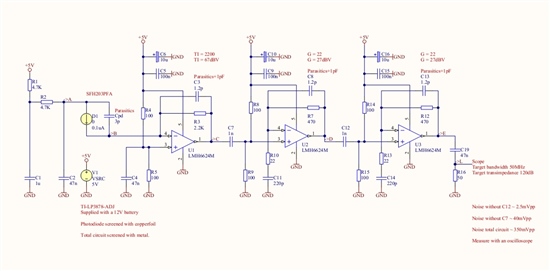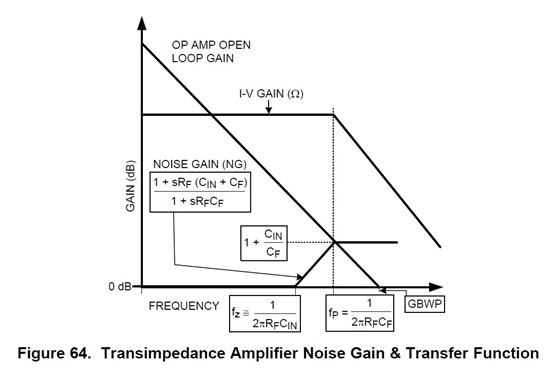Dear colleagues,
I've been experimenting with a High gain Optical receiver circuit based on three of LMH6624 amplifier stages. The first LMH6624 stage is configured as a TIA. According to my measurements the TIA stage generates approx. 660uVpp noise, causing a noise level of approx. 350mVpp on the output of the circuit. Based on calculations I would expect a level 10 times lower. I've included the circuit below. I would really appreciate any comments on how to improve the noise level or have my calculations verified.
With kind regards, Karel.



